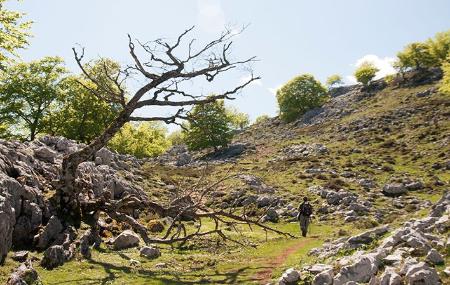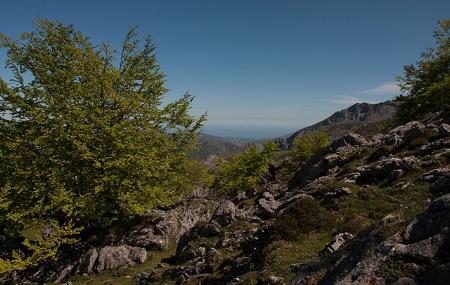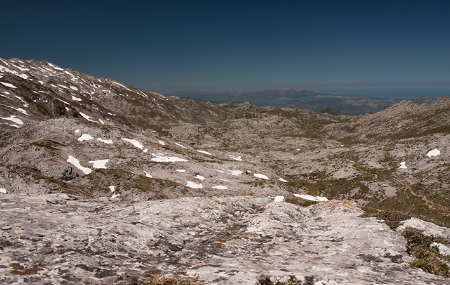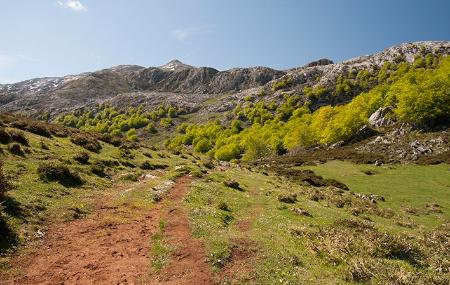
Vega de Ario
- Address Cangas de Onís and Onís Eastern Asturias
- Distance Distance: 16,2 kms
- Difficulty Difficulty: Half
- Code Code: PR222/PNPE4
- Altitude Altitude: 1649 m.
- Unevenness Unevenness: 596 m.
-
On foot
On foot:
6 h. 15 min.
Round trip
- Start point Start point: Lake Ercina
- Route type Route type: Hiking
- Tour type Tour type: Round trip
- Layout of the route Layout of the route: Download kml, Download gpx
Info
To climb up to Vega de Ario is to discover a little piece of paradise. A journey back to the times of shepherding, a journey to discover the past of mother earth, areas of ancient glaciers, of a history written in the rock by wind, water, ice and sun.
Impossible and impressive landscapes where the rock mingles with green pastures, patches of scrubland and beech groves. All of this is dotted with the red tile of the huts here and there. We are in the territory of vultures, golden eagles and chamois.
Climbing up to Ario transports us to a way of life very different from today's, where, as the poet says, the path was made by walking. A route to appreciate the sea from the Picos de Europa, to realise the dimensions of this mountain and to enjoy moments of solitude and silence, broken only by mountaineers in the distance, birds flying overhead or cows, goats and sheep grazing everywhere.
Route
Lake Ercina - Vega de Ario 16,3
We start this route at the Ercina Lake car park, in the lakes of Covadonga, where we can leave our cars, and head north to see what remains of the old mines in the area, the mine museum and the monument to the miner. We then border the Ercina lake to the east, heading southeast towards the Vega de Ario, in the central massif of Picos de Europa.
After a kilometre and a half, our path will separate us from Lake Ercina. A few metres further on, we leave a hut on our left to go up a mountain pass.
After 500 metres, on the right hand side we see a limestone overhang. Inside some of the rocks that have been broken, you can see the marked coppery red colour given to them by the iron they are made of. It is with this mineral that the Basilica of Covadonga is made. Here the path flattens out until it reaches Las Bobias sheepfold.
At approximately kilometre 3.4, we will have reached Las Bobias. This is a group of shepherds' and livestock farmers' houses. Half a kilometre further on, the slope begins to increase until it reaches the highest point of the route.
When we have walked about 7 kilometres, we find ourselves at the highest point of the route, from where we will have a panoramic view of some of the highest peaks of Picos de Europa.
After having descended a few metres, in the 500 metres following the previous point, we reach the Vega de Ario. After admiring the scenery, the only thing left to do is to return, taking the path we came from.
After 11 kilometres we come to a point where, if we take the path to the right, we can return via Belbín; we continue on our way until we reach the end of our route, which is the same place as the starting point, approximately 5 kilometres away.




